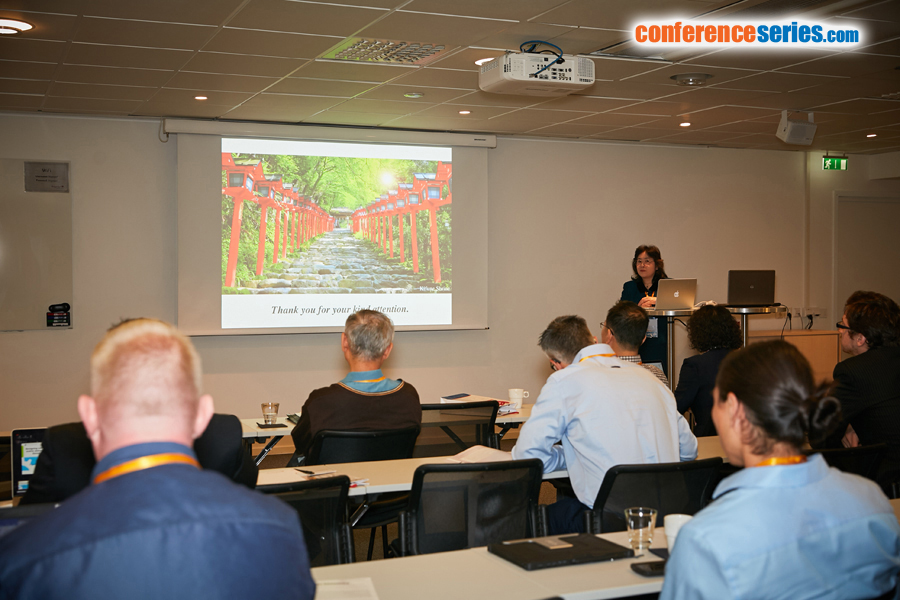
Eri Yoshida
Toyohashi University of Technology, Japan
Title: Worm-like Vesicles Prepared by Photo Nitroxide-Mediated Controlled/Living Radical Polymerization-Induced Self-Assembly
Biography
Biography: Eri Yoshida
Abstract
Worm-like organisms are often observed as baculiform cells and tubular organelles.Worm-like vesicles are regarded as artificial models of biomembrane for these cells and organisms and are expected as new carriers for drug and gene delivery. This paper describes the synthesis of worm-like vesicles consisting of amphiphilic poly(methacrylic acid)-block-poly(methyl methacrylate-random-methacrylic acid), PMA-b-P(MMA-r-MA), through the photo nitroxide-mediated controlled/living radical polymerization (photo NMP)-induced self-assembly. The mechanism of the formation and stimuli-responsive behavior of the worm-like vesicles are also described. The worm-like vesicles were prepared by the photo NMP-induced self-assembly of PMA-b-P(MMA-r-MA) using 4-methoxy-2,2,6,6-tetramethylpiperidine-1-oxyl in an aqueous methanol solution. It was found that the polymerization had the living nature based on the linear correlation between the molecular weight and monomer conversion. The copolymer during the early stage of the polymerization produced cup-like vesicles with the thin and flexible bilayer including some holes in the surface. As the hydrophobic P(MMA-r-MA) block chain was extended by the polymerization progress, the cup-like vesicles were transformed into spherical vesicles, followed by worm-like vesicles due to the incorporation of the spherical vesicles. The worm-like vesicles had the major axis of 3.41 mm and minor axis of 0.437 mm on average. The vesicles were sensitive to temperature and transformed into spherical or shorter worm-like vesicles and finally into a fused plane by a temperature increase. The worm-like vesicles were restored by decreasing the temperature through branched tubules.The worm-like vesicles were also sensitive to pH and salt concentration and more stable than spherical vesicles consisting of PMA-b-P(MMA-r-MA).



